Fenestratus Cichlid - Vieja fenestrata
Scientific name: Vieja fenestrata
Common name: Fenestratus Cichlid
Family: Cichlidae
Usual size in fish tanks: 25 - 30 cm (9.84 - 11.81 inch)
014
Recommended pH range: 7.2 - 8.4
Recommended water hardness: 11 - 23°N (196.43 - 410.71ppm)
0°C 32°F30°C 86°F
Recommended temperature range: 23 - 27 °C (73.4 - 80.6°F)
The way how these fish reproduce: Spawning
Where the species comes from: North America
Temperament to its own species: peaceful
Temperament toward other fish species: aggressive to smaller
Usual place in the tank: Bottom levels
Vieja fenestrata Overview
The Fenestratus Cichlid (Vieja fenestrata) is a large, colorful cichlid species native to the Atlantic slope river basins of Mexico, from the Papaloapán River to the Chachalacas River. Known for their vibrant color patterns and robust size, they are a popular choice for experienced aquarists. In captivity, these fish can grow to sizes of 25 to 30 cm (9.84 to 11.81 inches), making them best suited for large aquariums. While peaceful towards their own kind, they can be aggressive towards smaller fish, especially in a territorial setup.
Tank Requirements
Given their size and territorial behavior, Vieja fenestrata require a spacious aquarium with a minimum size of 500 liters (130 gallons) to provide enough swimming space and minimize aggression. The tank should be equipped with plenty of hiding places, including rocks, caves, and driftwood, to help the fish establish territories and reduce stress. A sandy substrate is ideal, as these cichlids enjoy digging and sifting through the sand.
Maintain water temperatures between 23-27°C (73.4-80.6°F) and a pH range of 7.2 to 8.4. The water hardness should be between 11 to 23°N (196.43 - 410.71 ppm). Ensure that the tank is equipped with a powerful filtration system, as these large fish produce a significant amount of waste. Regular water changes (20-30% weekly) are necessary to maintain water quality and prevent stress-related illnesses.
Food and Feeding
In the wild, Vieja fenestrata are primarily herbivorous, feeding on plant matter, algae, and occasionally insects and invertebrates. In captivity, their diet can be replicated with a mix of high-quality cichlid pellets, spirulina flakes, and algae wafers. To provide variety and ensure balanced nutrition, supplement their diet with meaty foods such as prawns, cockles, and mussels. Be cautious not to overfeed high-protein foods, as it can lead to digestive issues. Feeding them 2-3 times a day in small amounts will help maintain their health and vibrant coloration.
Sexing
Sexing Vieja fenestrata can be done by observing their size and physical traits. Males tend to be larger than females and develop extended dorsal and anal fins as they mature. Additionally, males will develop a noticeable nuchal hump on their heads as they age, which is another key distinguishing characteristic.
Breeding
Vieja fenestrata are egg depositors, meaning they clean a flat surface (usually a rock or cave) where the female lays her eggs. After spawning, the eggs typically hatch in 2-3 days, and the fry become free-swimming after another 4-5 days. During this time, both parents will exhibit strong parental care, protecting the eggs and fry from potential threats. The fry can be fed newly hatched brine shrimp or crushed flakes until they grow large enough to accept micro worms. A separate rearing tank or divider may be necessary to protect the fry or reduce aggression between the parents during this period.
Lifespan
With proper care, Vieja fenestrata can live up to 8 years. Maintaining stable water conditions, providing a balanced diet, and creating a stress-free environment are essential to ensuring their longevity and overall health.
Compatibility and Tank Mates
Vieja fenestrata can be peaceful towards their own species, especially when housed in a large enough tank with plenty of hiding spaces. However, they may exhibit aggressive and territorial behavior towards smaller or more timid fish, especially during breeding. Suitable tank mates include other large, robust cichlids or similarly sized species such as Oscars or Jack Dempsey Cichlids. Avoid housing them with small fish, as they may be seen as prey. Providing plenty of visual barriers and separate territories will help reduce aggression.
Short Description
Vieja fenestrata, also known as the Fenestratus Cichlid, is a large and colorful cichlid species native to the rivers of Mexico. While generally peaceful towards their kind, they can be aggressive towards smaller tank mates. Their care requires a large tank with stable water parameters, high-quality filtration, and a balanced diet. These fish are fascinating to watch, especially during breeding, as they exhibit strong parental care for their fry.


 Thread-finned
Thread-finned 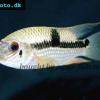 Acara
Acara  Yellow
Yellow  Patrick's
Patrick's  Blue
Blue  Green
Green 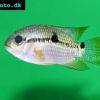 Acara
Acara  White
White  Compressed
Compressed 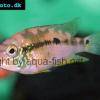 Pastel
Pastel  Midas
Midas  Red
Red  Bluemouth
Bluemouth  False
False 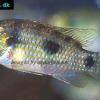 African
African  Agassiz's
Agassiz's  Banded
Banded 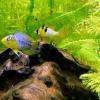 Yellow
Yellow  Cockatoo
Cockatoo  Blue
Blue  Blackstripe
Blackstripe  Highfin
Highfin  Redstripe
Redstripe  Threadfinned
Threadfinned  Macmaster’s
Macmaster’s 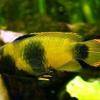 Panda
Panda  Norbert’s
Norbert’s 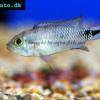 Blue
Blue  Thin-line
Thin-line  Three-striped
Three-striped  Viejita
Viejita 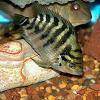 Flier
Flier  Archocentrus
Archocentrus  Convict
Convict  Seven
Seven  Spiny
Spiny  Oscar
Oscar  Sunshine
Sunshine  Chitande
Chitande  Firebird
Firebird  Midnight
Midnight  Lake
Lake  Sunshine
Sunshine  Aulonocara
Aulonocara  Nyasa
Nyasa 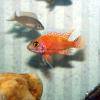 Ruby
Ruby  Grants
Grants  Aulonocranus
Aulonocranus  Chameleon
Chameleon  Benitochromis
Benitochromis  Orinoco
Orinoco  Yellow
Yellow 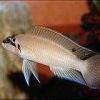 Brichard’s
Brichard’s  Guenther’s
Guenther’s  Southern
Southern  Cichla
Cichla 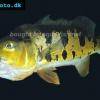 Peacock
Peacock  Chiseltooth
Chiseltooth  Bolivian
Bolivian  Red
Red  Many-pointed
Many-pointed  Jack
Jack  Red
Red  Three
Three 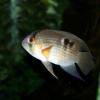 Keyhole
Keyhole  Azureus
Azureus  Red
Red  Jackson’s
Jackson’s  Crenicichla
Crenicichla  Honduran
Honduran  Blue-eye
Blue-eye  Afra
Afra 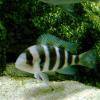 Frontosa
Frontosa  Slender
Slender  Malawi
Malawi  Chequerboard
Chequerboard  Checkerboard
Checkerboard  Malawi
Malawi  Ectodus
Ectodus  Tanganyika
Tanganyika  Canara
Canara  Green
Green  Rostratus
Rostratus  Pearl
Pearl 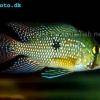 Geophagus
Geophagus  Yellowhump
Yellowhump  Suriname
Suriname  Redhump
Redhump  Red
Red  Dority’s
Dority’s  Argentine
Argentine 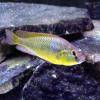 Burton’s
Burton’s  Victoria
Victoria 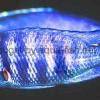 Haplochromis
Haplochromis  Jewel
Jewel  Banded
Banded 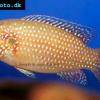 Lifalili
Lifalili  Lowland
Lowland  Texas
Texas  Pantano
Pantano  Severum
Severum  Banded
Banded 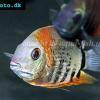 Severum
Severum  Rainbow
Rainbow  Parrot
Parrot  Chocolate
Chocolate  Brown
Brown  Marlieri
Marlieri  Golden
Golden  Striped
Striped  Masked
Masked 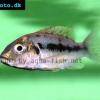 Konye
Konye  Blue
Blue  Trewavas
Trewavas  Electric
Electric  Dwarf
Dwarf  Redbreast
Redbreast  Lamprologus
Lamprologus  Gold
Gold 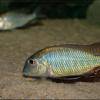 Greenface
Greenface 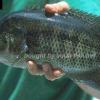 Mayan
Mayan  Aurora
Aurora  Blue
Blue  William’s
William’s 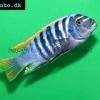 Zebra
Zebra  Malawi
Malawi  Blue
Blue 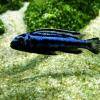 Blue
Blue  Mbuna
Mbuna  Parallel
Parallel  Purple
Purple  Flag
Flag  Bolivian
Bolivian  Ram
Ram  Basket
Basket 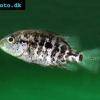 Haitian
Haitian  Zebra
Zebra  Striped
Striped  Neolamprologus
Neolamprologus  Brevis
Brevis  Fairy
Fairy 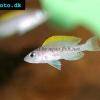 Neolamprologus
Neolamprologus  Cylindricus
Cylindricus  Hecq’s
Hecq’s  Neolamprologus
Neolamprologus  Lemon
Lemon  Mustax
Mustax  Daffodil
Daffodil  Six-bar
Six-bar  Five-bar
Five-bar  Marbled
Marbled 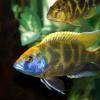 Giraffe
Giraffe  Blue
Blue  Sulphurhead
Sulphurhead  Wolf
Wolf  Jaguar
Jaguar  Blue
Blue  Marakeli
Marakeli  Madagascar
Madagascar  Pinstripe
Pinstripe  Pelmatochromis
Pelmatochromis  Kribensis
Kribensis 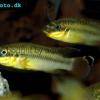 Striped
Striped  Red
Red  Deepwater
Deepwater  Fenestratus
Fenestratus  Nichols’
Nichols’  Southern
Southern  Bumble
Bumble  Demason’s
Demason’s  Slender
Slender  Red
Red  Mbuna
Mbuna  Malawi
Malawi  Kenyi
Kenyi  Powder
Powder  Altum
Altum  Angelfish
Angelfish  Angelfish
Angelfish 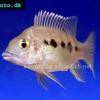 East
East  Juba
Juba  Earth
Earth 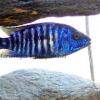 Electric
Electric  Azure
Azure 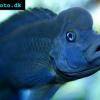 Lionhead
Lionhead  Discus
Discus  Blue
Blue  Red
Red  Zebra
Zebra  Brichard’s
Brichard’s  Blue
Blue  Firemouth
Firemouth  Zebra
Zebra  Yellow
Yellow  Blue
Blue  Dwarf
Dwarf  Blunthead
Blunthead 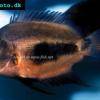 The
The  White
White  Twoband
Twoband  Window
Window  Tailbar
Tailbar  Black
Black  Redhead
Redhead 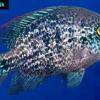 Oaxaca
Oaxaca  Xenotilapia
Xenotilapia